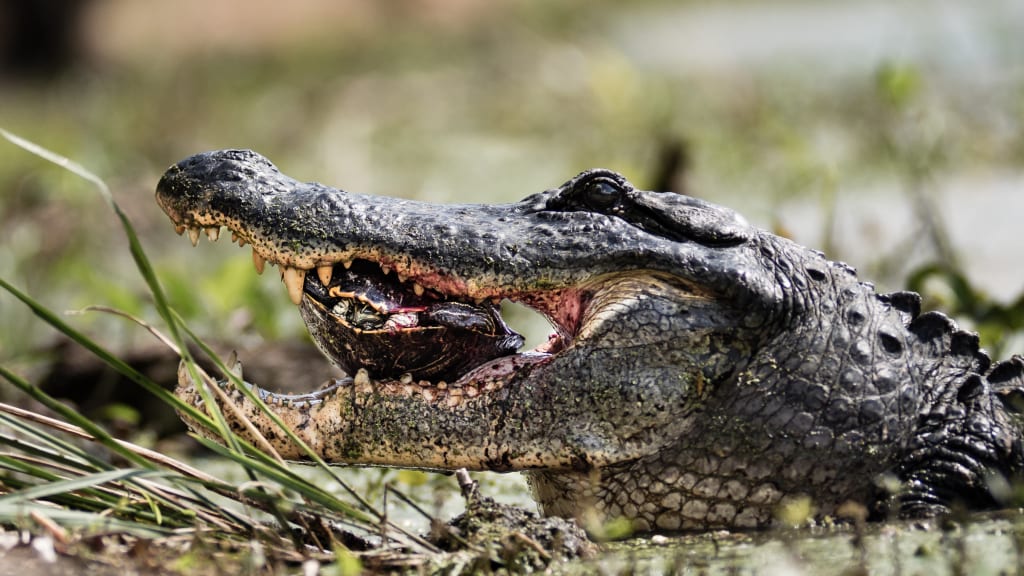
I got to my favorite alligator (Alligator Mississippiensis) photography park (Brazos Bend State Park, Texas) over an hour after sunrise because I accidentally slept in. It is the middle of mating season and I can hear them down in the swamp bellowing as I get my gear together. Unfortunately by the time I made my way to 40 Acre Lake they had finished establishing their territory for the day and there was only the occasional bellow. This time of the year the park is full of Yellow-Crown Night Herons (Nyctanassa Violacea) hunting crawfish and it didn’t take me long to come across one on the hunt.
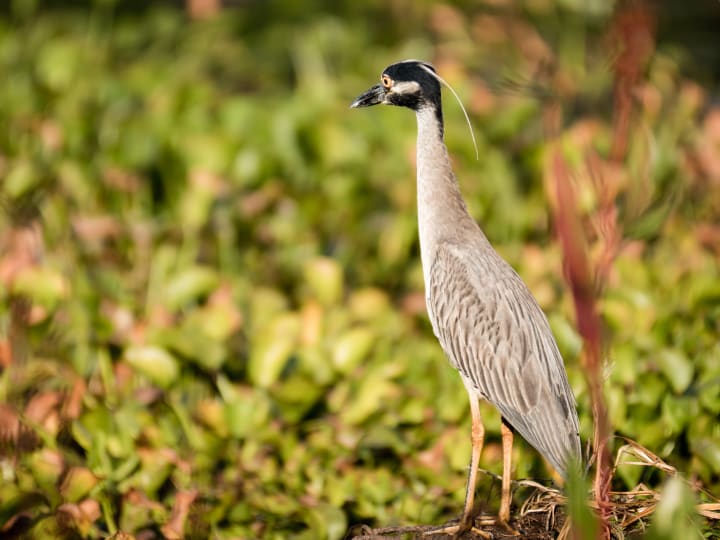
The below photograph is a 180 degree panorama I took with my iPhone. The trail you see on the sides is the same trail which runs along 40 Acre Lake. To the right is the parking lot while the left joins up with the Causeway Trail. The Causeway Trail is just that, a causeway of raised earth that runs through the heart of the swamp and comes out at Elm Lake. During the summer it is my favorite trail in the park because it has a thick canopy of trees that helps to filter out the harsh summer light of east Texas. It is also a wildlife mecca, you are likely to see any of the various animals that make the park their home.

I was only sitting there a few minutes when Mr. Heron decided to try a different fishing spot just beyond the tree on the left in the photograph above. Moving down the trail to get closer I realized that I needed to go pass him so I wouldn’t be shooting into the sun. To accomplish this I moved to the far side of the trail and was able to get by without him flying off, positioning my self a little over half way between the tree and tower in the background.
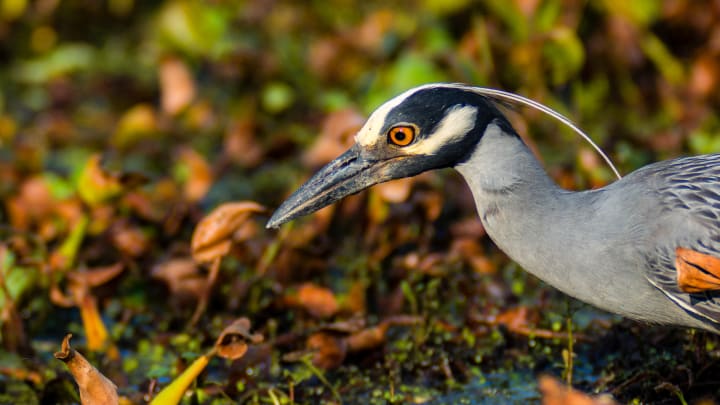
The park has a large amount of swamp land within its boarder with an equally large number of gators that call it home. When in the swampy areas it is advisable to keep your head on a swivel because they can come from any direction. While sitting here watching Mr. Heron hunt I got a gentle reminder on just how dangerous it can be laying at the edge of the swamp perfectly still while wearing full camouflage.
As a wildlife photographer I am very observant and not much moves around me that I don’t notice. So imagine my surprised when a 8 foot gator crawled out of the water 40 feet in front of me without me even noticing him prior to coming out of the water. These guys move with such stealth despite their large size. The water below the floating foliage is only a few feet deep, you would think you would notice a gator moving through it to get to the shoreline. I never noticed this guy until he was at the bank and coming out of the water. After getting out of the water he decided to lay on the bank to enjoy the morning sun.
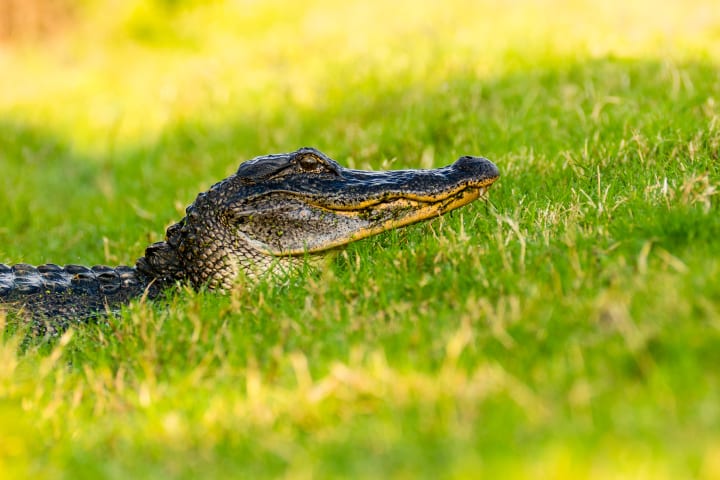
He only hung out there for a few minutes before getting up and moving up the bank, across the trail, and into the swamp on the other side.
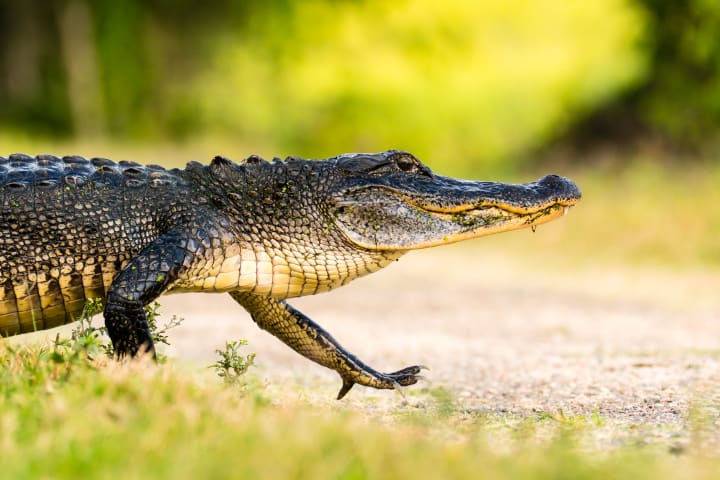
I was a little surprised when he got up and moved off since he looked so comfortable laying there in the beautiful morning sun. The scary part about this encounter was the reminder of just how quiet an 8 foot gator can be. I never heard one sound as he came out of the lake, walked through the grass and across the trail, or while going through the thick vegetation and into the swamp. My curiosity about why he moved became apparent only a few seconds after he disappeared into the swamp as an even larger gator (about 11 feet long) came out of the lake in the exact same spot without any prior indication he was there. Alligators have vibration sensors in their skin that can detect even the slightest vibration, which would explain how he knew the even bigger gator was coming out of the lake.
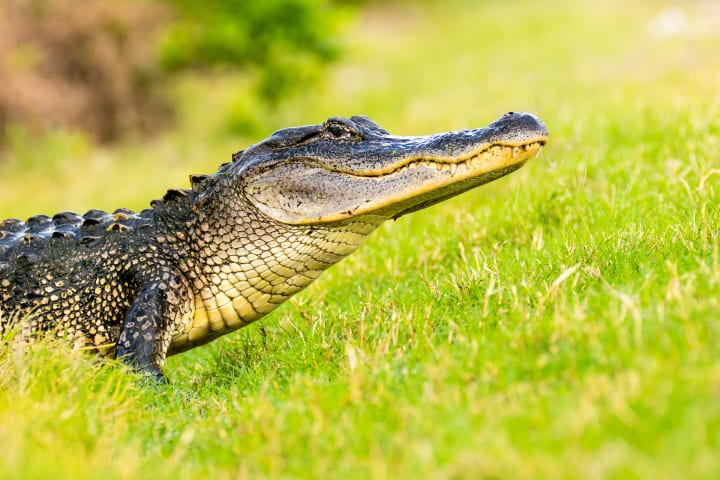
After Big Daddy laid down I broke out my 3D printed skimmer pod to capture this next photograph. I have been after a shot in this style for a few months now. Have come close to it a few times and while this shot is not exactly the one I keep seeing in my head, it is the closes so far. I really like the softness of the out of focus areas against the rough texture of the gator.
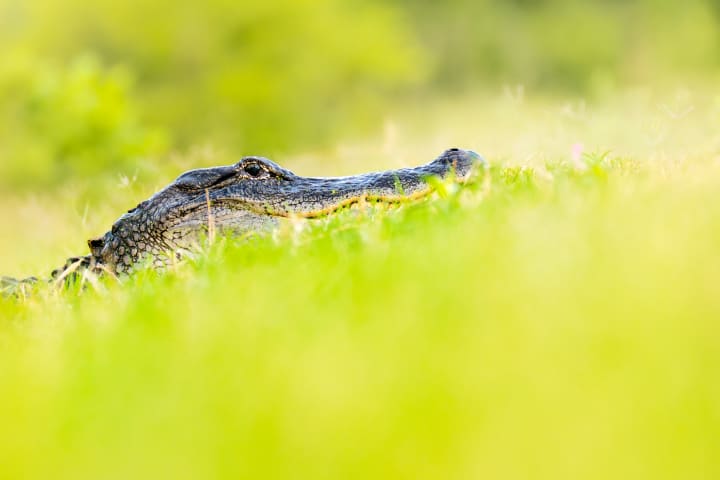
He laid there for a good 15 minutes before getting up and walking into the swamp on the other side of the trail. Once again, he never made a single noise the entire time, this is one of my biggest fears while out in the swamps. They are so quiet, can come from any direction, and are faster then you or I can even think of running. My head is always on a swivel when out there and I am super observant, yet both of these gators came out of the lake without me even noticing them until they appeared 40 feet away. Sitting there Saturday was a gentle reminder of just how dangerous the swamps really are and why even being hyper aware bad things can still happen. Every time I lay along the swamp not moving while waiting for something I think about a gator walking out right next to me (or even right on me). To date it has not happen, the closes was when one crawled out about 10 feet behind me without me knowing he was there. Needless to say, both of us had a serious scare when I stood up. Thankfully he headed into the water for safety vs dealing with me a more gator kind of way.
You will notice while walking the trails this time of year the large number of crawfish shells scattered about. The Night Herons like to bring them onto the trail and away from the water so they can’t get away when dropped. While watching and photographing Big Daddy, Mr Heron had caught a crawfish and moved to the trail to eat.
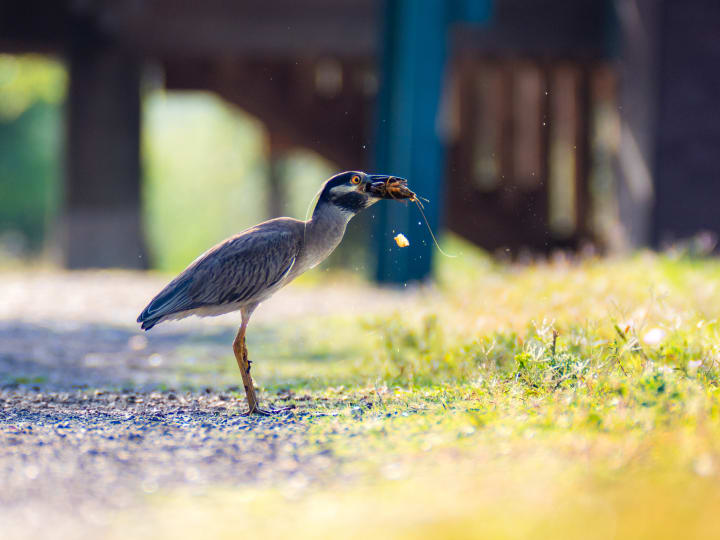
While photographing Mr. Heron I noticed an Anhinga (Anhinga Anhinga) sitting on a stump in the swamp. There is a nesting pair that have been hanging out in this area for a few months now but I have yet to locate the nest, suspect it is deeper in the swamp where I can’t go. So I crawled across the trail to the swamp side to photograph him.
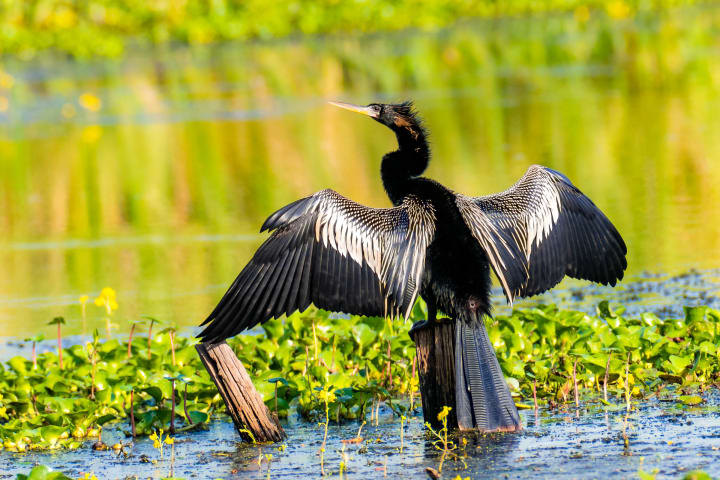
I was watching the Anhinga for about 10 minutes and while crawling forward Big Daddy noticed me. Something I have learned is wildlife will get curious when they see a human lay on the ground and will often approach closer to see what is going on. A trick I used pretty regularly to get my subjects closer for better photographs. Big Daddy was no exception, he was about 50 feet out in the open water and started swimming directly towards me. He got to the edge of the weeds and stopped. It is mating season and the gators are on the aggressive side, which made me a little nervous laying there. I knew standing up would get him to swim off, but it would also spook my Anhinga and I try hard to not spook wildlife. I was comfortable with him sitting there as long as he didn’t move closer, so I continued to photograph the Anhinga while keeping a very watchful eye on Big Daddy. After about 10 minutes he lost interest in me and swam off.
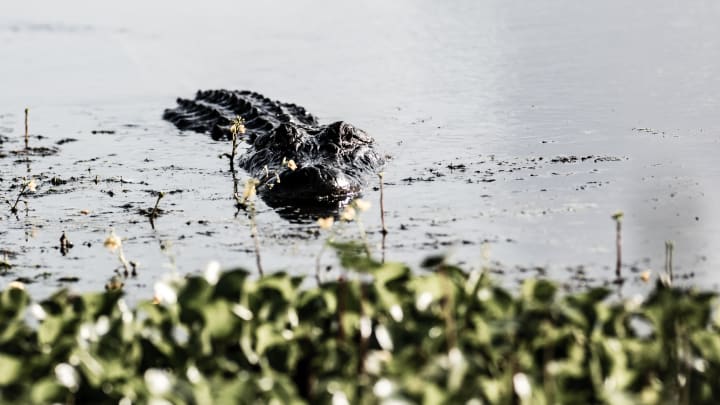
For the third time today I had a gentle reminder about the dangers of the swamp. After Big Daddy swam off I decided it was time to pack it up and head down the Causeway Trail. The trail is only 0.6 miles but it took me 2 hours to get to the end at Elm Lake. While looking for wildlife I always move slowly and quietly to increase my chances of finding things to photograph. While on the Causeway Trail I encountered and watched a number of birds and reptiles but didn’t get any quality photographs. It was hot and humid (feels like temperature around 99) so I took a break in the shade to eat some granola and rehydrate when reaching Elm Lake. Sitting there relaxing I noticed a group of people about 1/4 mile down Elm Lake Loop Trail watching someone in the water. After resting there for about 15 minutes I happened to glance down at the group of people and noticed the nose of a gator rising up in front of them then slamming down really fast several times. That was when the lightbulb went off in my head. I quickly grabbed my pack and covered the 1/4 mile as fast as I could without actually running.
I get down there to see a big 12 foot gator eating a large Red-Eared Slider (Trachemys Scripta Elegans). The group told me he had been at it for at least 40 minutes before I got there. What the gator would do is raise his head and open/close his jaws on the turtle in an attempt to crack the shell. He would make 20 to 30 chomps before resting for 5 minutes or so, then rinse and repeat. I was there for four of these attempts. The shooting conditions were terrible, it was 10:30, the sun was about 30 degrees to the right and very harsh. Shooting from the other side would have been ideal but the curve of the lake made getting a photograph without actually going into the water impossible, which was not an option (more on that later). So I had no choice but to shoot into the sun. My Olympus ZD 150mm ƒ2.0 (aka Little Tuna) is the most amazing lens I have ever used and I have learned that it handles shooting into the sun well, so I was confident in walking away with some amazing images.
Just as I arrived he started chomping on the turtle, so I hit the ground and started shooting. In my excitement I made a rookie mistake and didn’t double check my settings. For the first round of chomping I had the lens wide-open at ƒ2.0, which caused the photographs to have a very narrow Depth of Field (DoF). Because of that I only had one photograph from the first round that met my high standards with the gators eye (most important part of the subject to be in focus) as well as the turtle in focus.
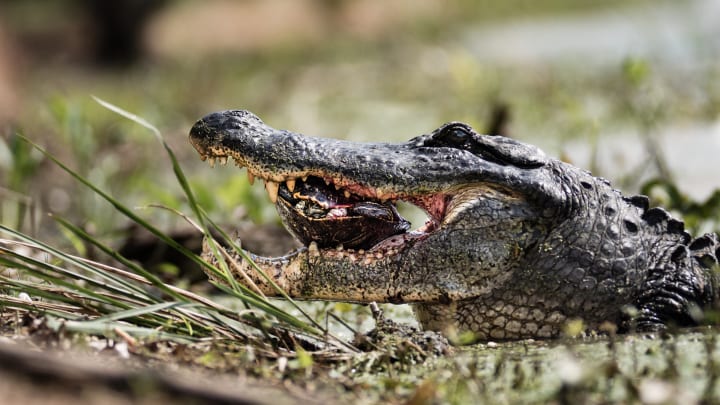
For the past two years I have been seriously photographing gators and learned that as amazing as the Little Tuna is wide-open I need to stop-down when photographing gators to get more DoF. I have an article about DoF when using telephoto lenses that I recommend reading to gain a better understanding of the subject. I noticed my error during the first round and stopped-down just as he was taking a break.
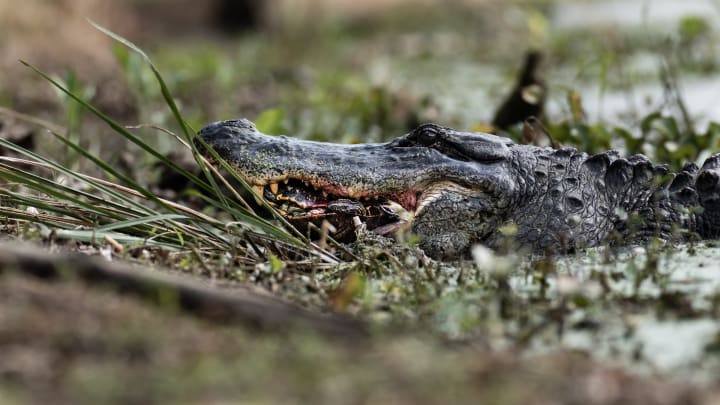
While laying there waiting for the action to start again I remembered my gentle reminders from earlier today and started looking around. There was a gator in the lake about 10 feet to my right as well as four others on the other side of the gator. Now you see why getting into the water on the other side was not an option. I am sure they were there in hopes of taking the turtle away from him. Only problem was none of them were big enough for the challenge and they knew it. Seeing the other gators made me realize that he could perceive me as a threat, so I stood up while he was resting. When he started round two of chomping I laid back down and captured a nice series of images.
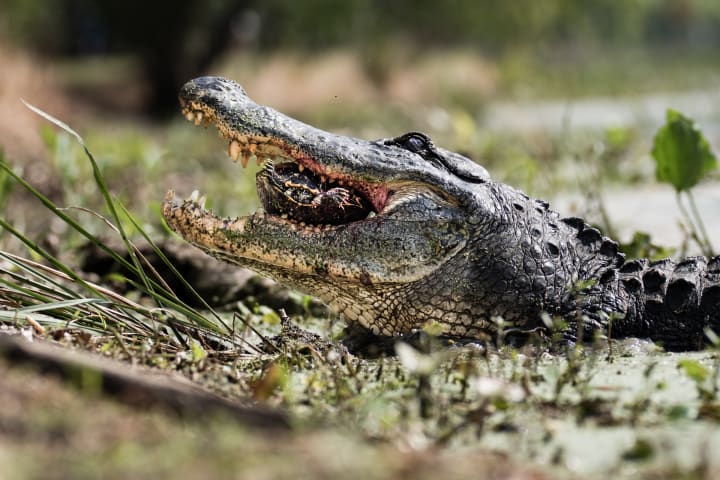
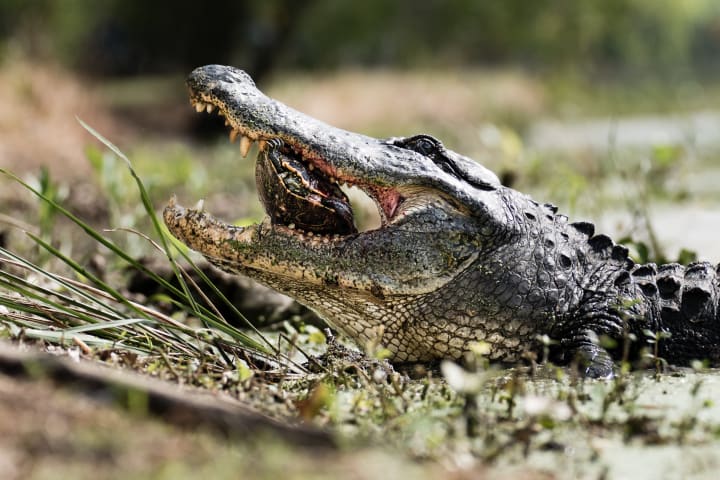
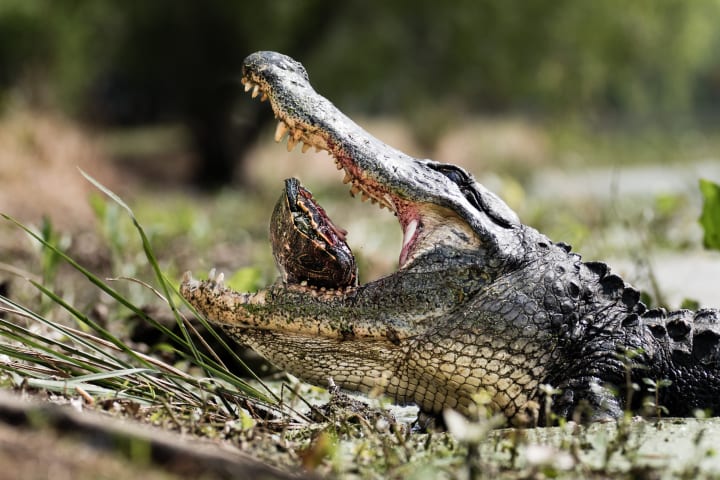
After he finished round two I moved to directly in front of him to get some photographs from a different perspective. At this point the turtle was still alive and his shell had not cracked despite the huge amount of force generated by the gator.
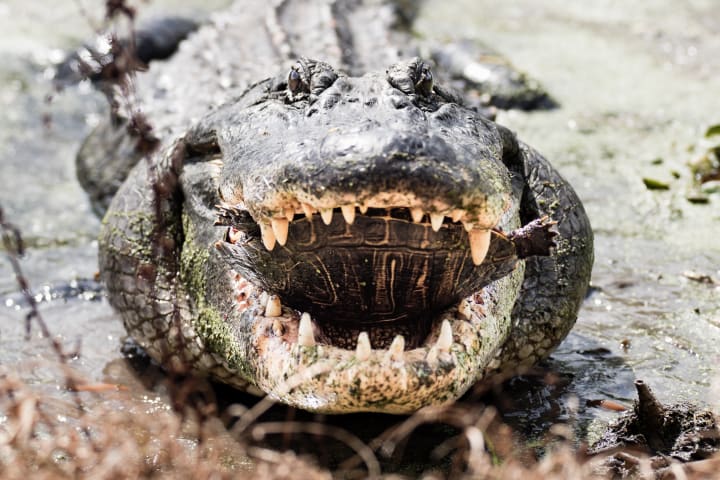
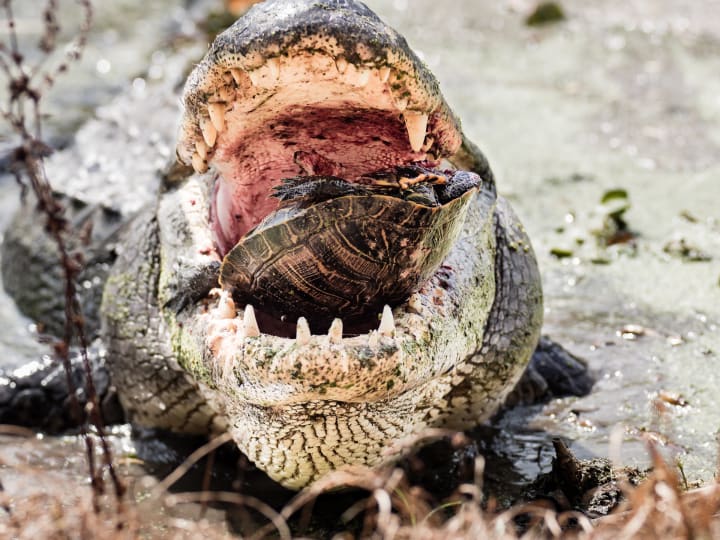
After firing off a couple of burst I realized I was once again making a rooking mistake because at this distance the DoF was still too narrow. You can see in the first photo that his eyes are in focus but the turtle is just out of the DoF and a bit soft. The second photograph is better since his mouth was open and all the focus is on the turtle and the gators teeth. Just after stopping down to ƒ4.0 all hell broke loose as the turtle popped out of the gators mouth. It was pure chaos as he rolled around in the muck trying to get his turtle back. I was way to close to capture the action with a 150mm lens but I did get one image that I really like (wish I had still been to the side, would have had the perfect angle). If you look to the right you can see the turtle upside down and half submerged.
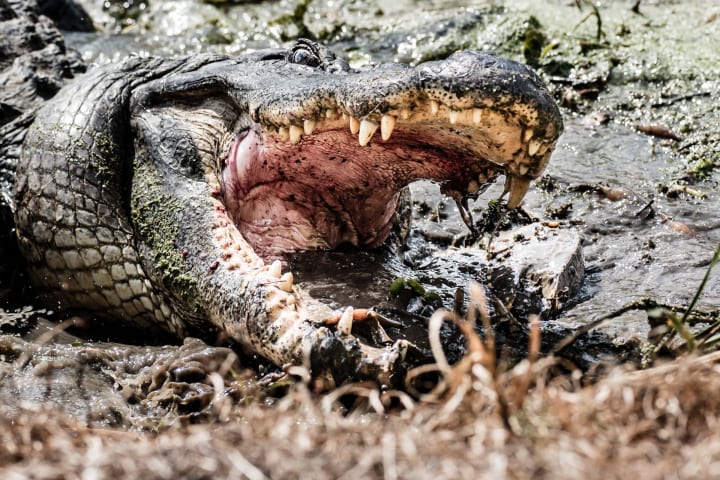
Right after I captured the above image he regained control of his turtle and took one of his rest breaks. While he was resting I decided to move to a 45 degree angle from him for another perspective. I also made the decision to keep the camera set to ƒ4.0 just to make sure there was enough DoF no matter what action ensued. I was chatting with another photographer when round four started. As he raised his head I mashed the focus button and fired off a burst but didn’t get a focus lock and the resulting images are a touch soft. Despite the slight softness to the photographs I really like them because of the muck flowing out of his mouth as he raised his head to begin chomping.

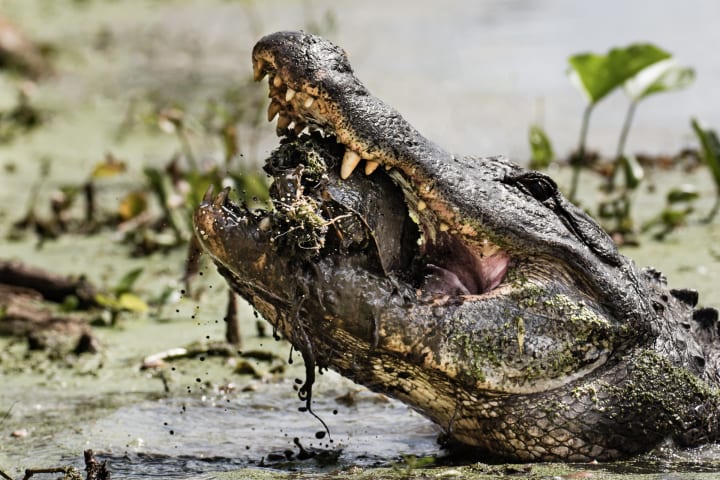
During this 4th round the shell cracked with an ear splitting pop which prompted the gator to swallow his meal. I was able to capture one good sharp image from this final round. I have the below image printed on a metallic canvas hanging in my kitchen and it looks amazing. I really wish the turtle had been facing me during this final round, but overall I am very happy with this photograph.

These photographs were some of the most time consuming for me edit in a long time. I can normally edit a photo in under 2 minutes, unless I have to get into Photoshop to clone out something. Because of the terrible shooting conditions I had to do a lot of masking so I could dodge/burn basically every part of the image. Each photograph took me about 30 minutes to edit, but that was after several hours of playing around with one to figure out the best way to handle the processing. I am just happy I had the Little Tuna to capture these images, it is an amazing lens that handles tough shooting conditions very well.
Watching this turtle get eaten was a bit more than a gentle reminder of just how dangerous these animals really are. The force which they can close their jaws with is just mind boggling, as is their speed which was evident when he dropped the turtle. The sounds of his teeth hitting the shell are still with me, especially when the shell violently cracked. I told myself I was going to shoot some video after that 4th round but he swallowed the turtle and I missed my chance. I am first and foremost a photographer but have been trying to shoot more video and really wish I had gotten some of this event, would have made some spectacular video.
While heading towards the gator I passed a turtle starting to dig a hole along the trail to lay eggs in. After capturing the action above I headed back to my Jeep and as I passed the turtle it was just finishing up burying its eggs. As one turtle’s life was ending the next generation was given a chance to carry on in the name of the Turtle.
If you enjoyed this story here is one about a not so gentle reminder.
I have uploaded full resolution images from the article to this Flickr album so you can view them in greater detail.
If you enjoyed this article please subscribe to my profile so you can read my current stories as well as know when new ones are published.
You can view my photographic work as well as purchase some of the images in this article from my website https://phocalart.com
Phocal
About the Creator
Phocal
I am outdoor adventurer and wildlife photographer who also enjoys story telling.
See as well as purchase my photographic work here: https://phocalart.com






Comments
There are no comments for this story
Be the first to respond and start the conversation.